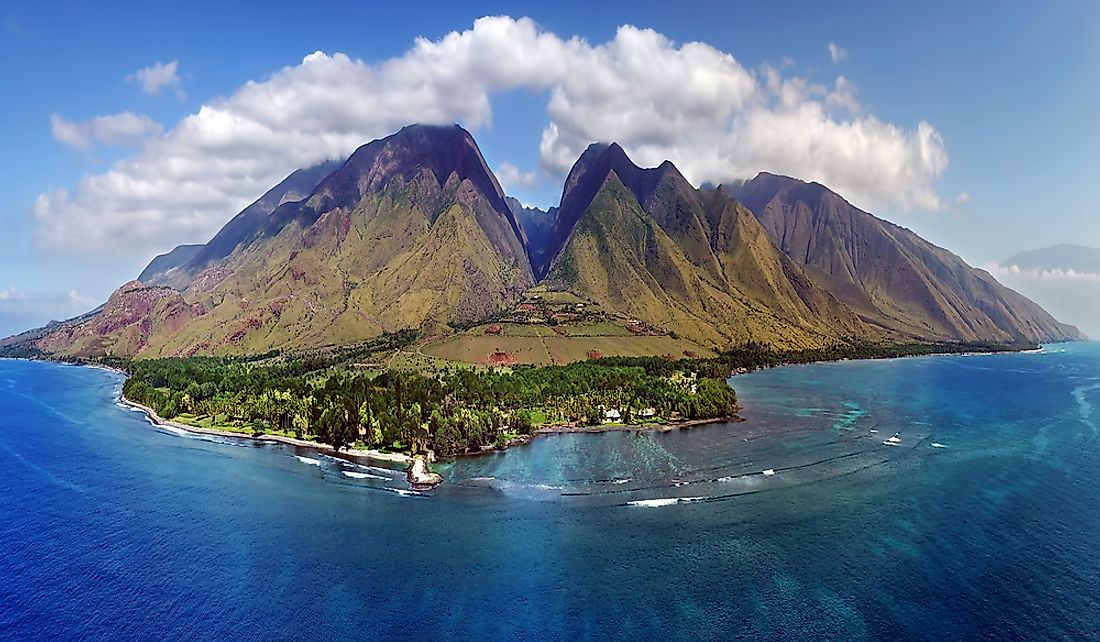What Is A High Island?

An island is a raised land, also known as sub-continental land, surrounded by water. Islands can form in water bodies such as oceans, rivers, or lakes. An island formed in rivers or lakes is also called eyot or ait. A group of related islands is referred to as an archipelago. There are three major types of islands; continental islands lying on the continental shelf of a continent, oceanic islands, and tropical islands. Islands can be formed by a volcanic eruption on the ocean floor, accumulation of sediments in an area within the water body, or reef building. Islands formed through volcanic eruptions are referred to as high islands or volcanic islands.
Definition and Use of the Term “High Island”
The term “high island” is not used in reference to the size of the island as being high but to distinguish between the volcanic islands and the low islands which are mainly formed by the accumulation of sediments or the uplifting of coral reefs. Some of the high islands are just a few feet above the water surface and are classified as islets while some low islands such as Nauru, Banaba, Niue, Makatea, and Henderson are several feet above the water surface. In the South Pacific Ocean, these two types of islands are often found in close proximity to each other. However, high islands have greater habitat diversity compared to the low islands within the same geographical area. Thus, there is no human settlement on most of the low islands.
Formation of High Island
High Islands, also called volcanic islands, are formed by volcanic activities. The Earth’s crust is made up of tectonic plates that are constantly moving on the surface of the planet. In some places, the plates come together, forming volcanoes. The volcano may also form in the middle of the plate, forcing magma to rise upwards until it erupts in the middle of the seafloor, at what is known as a hot spot. As the volcano erupts, it builds up layers of lava that may eventually break to the surface of the water to form an island. When the volcano is still below the sea level it is called a seamount. Most of the high islands have rugged interiors with a wide range of summit elevations. Several of these islands are surrounded by fringing or barrier reefs which may enclose a lagoon. These islands range in size from less than 1 square mile to thousands of square miles.
Examples of High Islands
The Hawaiian Islands is a group of eight major islands, numerous islets, and seamounts located in the North Pacific Ocean. The islands are exposed peaks of underground volcanic mountains. The major islands of Hawaii include the Island of Hawai’i, Maui, O’ahu, Kaua’i, Moloka’i, Lana’i, Ni’ihau, and Kaho’olawe.
Iceland is one of the largest volcanic islands in the world, covering an area of approximately 40,000 square miles. This island resulted from volcanic activities along the mid-Atlantic ridge. With a population of 357,000 people, it is Europe’s most sparsely populated country.
Other volcanic islands include Sumatra, Honshu, Java, North Island, and Luzon Island.











